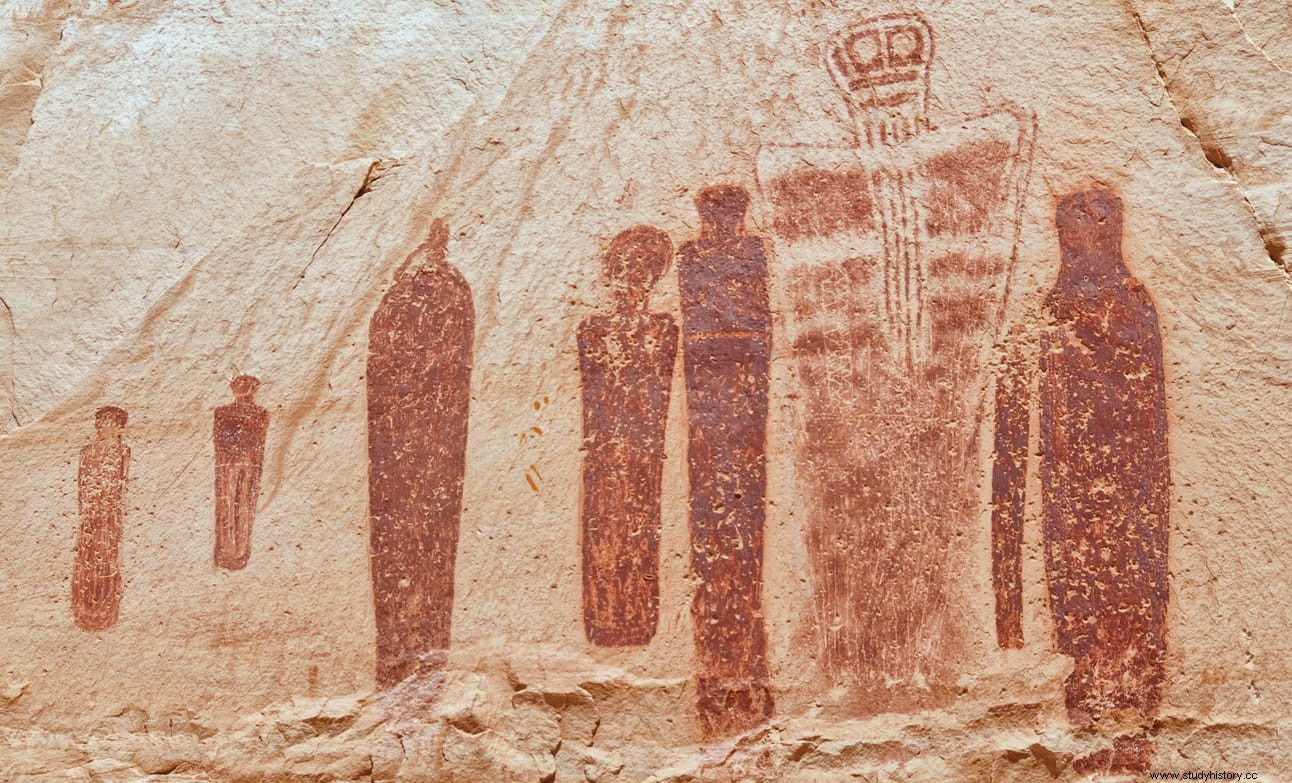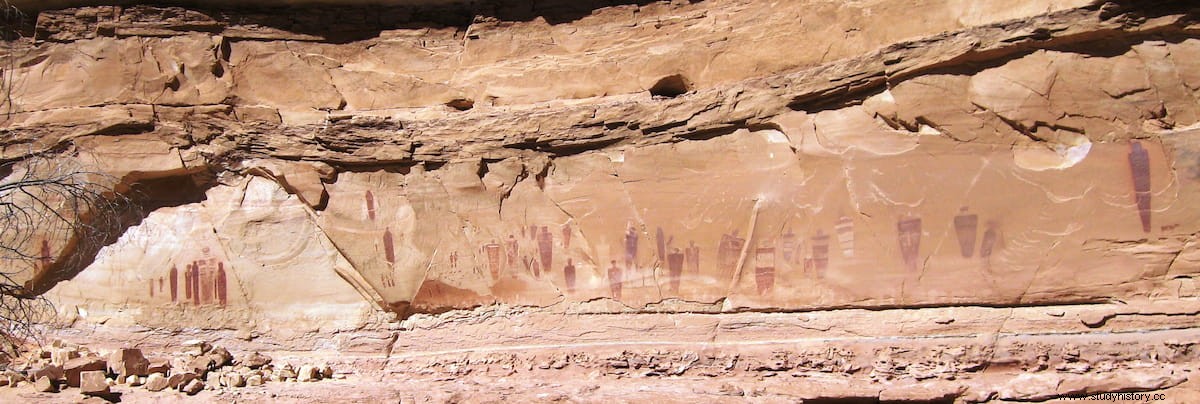In the southwestern United States, mainly in the state of Utah, there is a large concentration of places where pictographs and petroglyphs appear on rocks and walls in the open air.
They represent life-size human figures, elongated and stylized, ending in a point, in a style that researcher Polly Schaafsma called Barrier Canyon Style in 1971.
Its antiquity dates back to the archaic period, with most of the panels dating to some time between 1,500 and 4,000 years ago, although some could be older, but also more modern.

The most famous of all the panels is found in Horseshoe Canyon (formerly Barrier Canyon, hence the name of the style), located west of the Verde River in Utah. It is called The Great Gallery and today it is considered the work of the archaic desert culture, a group of nomadic hunter-gatherer peoples that would have preceded (or according to some coexisted) with the later Fremont culture.
The Great Gallery It is a spectacular panel of more than 60 meters in length by about 5 in height in which some 20 life-size anthropomorphic images are represented, the largest of which exceeds 2 meters in height.
It is divided into two clearly differentiated areas, so the more separated representations, on the left, are known by the name of Panel of the Holy Spirit , due to the presence of an unusual-looking figure that some identify with a spirit and others with some kind of shamanic ritual. This panel has been dated by optically stimulated luminescence to between 400 and 1100 AD.
The pictograms of the Great Gallery They were made using ocher-red color to represent more than 80 figures, whose meaning experts can only speculate. Its endowment is also problematic, because the pigments used lack organic material and cannot be analyzed by radiocarbon.

For this reason, experts must use other techniques, such as the aforementioned optically stimulated luminescence, to determine when a material was last exposed to sunlight, and even in this case go to geology to find out when, between two geological processes. , the panel was painted.
The archaeological record also presents problems. About 12 kilometers from the location of the large panel, two caves were found in which clay figurines and other artifacts appeared (already in 1975) with obvious similarity to the anthropomorphic images of La Gran Galeria . However, they were found in strata about 7,000 years old.
For this reason, some researchers continue to believe that the representations may actually be much older.
Visit the place to see live La Gran Galeria it's not exactly easy. It is necessary to make a vertical descent of about 225 meters through the walls of the canyon, and then walk between 3 and 6 hours in the intense heat of the Utah desert to reach the place. However, along the way you can see three other impressive panels decorated in the same style.
